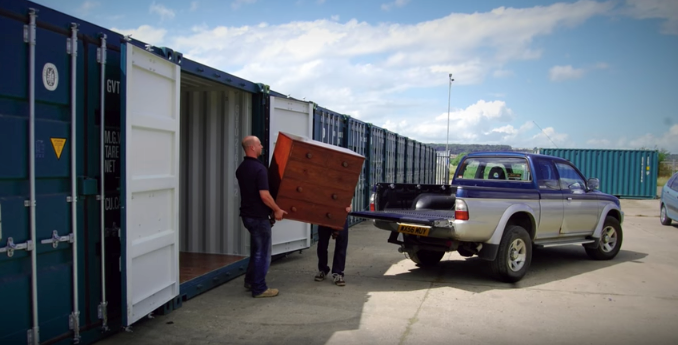While shipping containers can be an attractive, low-cost storage solution, repurposing them could be risky.
A new video from WorkSafeBC highlights some dangers associated with reusing shipping containers, particularly when storing propane and gasoline. Containers are designed to be watertight, well-sealed, and provide little ventilation. That can lead to a build-up of pressure, making contents unstable and cause an explosion. A small gas leak can be dangerous, and a full propane tank can have the same explosive force as 100 kilograms of TNT.
When used correctly, however, they can be safe.
Containers have been used as frames for new homes, offices, and workspaces. The District of Squamish currently allows them to be used as permanent structures in some development areas, but they have to be screened with proper fencing and may have to be modified to comply with B.C. Building Code requirements. Installing them requires a building permit.
Mayor Patricia Heintzman said the District is not currently looking at banning them for residential or storage use, but there could be many non-compliant shipping containers in Squamish. The District responds to them on a complaint basis.
"When used properly and when ventilated properly, they can be quite good," she said. "I think the challenge of shipping containers is there is a lot of them that are not complying with the code. We just hope people are being responsible and making sure their facility is safe."
At a council meeting in March 2014, Coun. Doug Race made a motion that containers only be allowed for auxiliary storage and not be used as a residential building and that they not be allowed as accessory buildings in residential areas. Both motions failed.
The mayor has indicated the building department may review the District's policy in the near future in response to this recent safety information from WorkSafeBC.
"It could be that council and staff determine that there should be a course of action, but a lot of the time this type of thing isn't regulated by [the municipality]," she said.
In 2013, a propane barbeque caused an explosion that launched the door of a shipping container 40 metres into a park in Saanich. In 2011, a firefighter was killed when the door of a container blew off and struck him while putting out a fire in the next building in Enderby.
How containers are used before being repurposed may cause additional problems. For instance, floorboards may have been treated with toxic chemicals to protect cargo during shipping, which can be hazardous to inhale.
WorkSafeBC recommends employers conduct risk assessments of containers, including:
*identifying whether flammable or combustible materials are being stored and move them to a place that is well-ventilated;
*proper training and signage;
modifying containers to allow proper ventilation;
removing possible heat and ignition sources;
*listing contents of containers in a fire-safety plan so first responders can be informed of a containers' contents; and
*cleaning or replacing floors that may have been contaminated with toxic chemicals.



